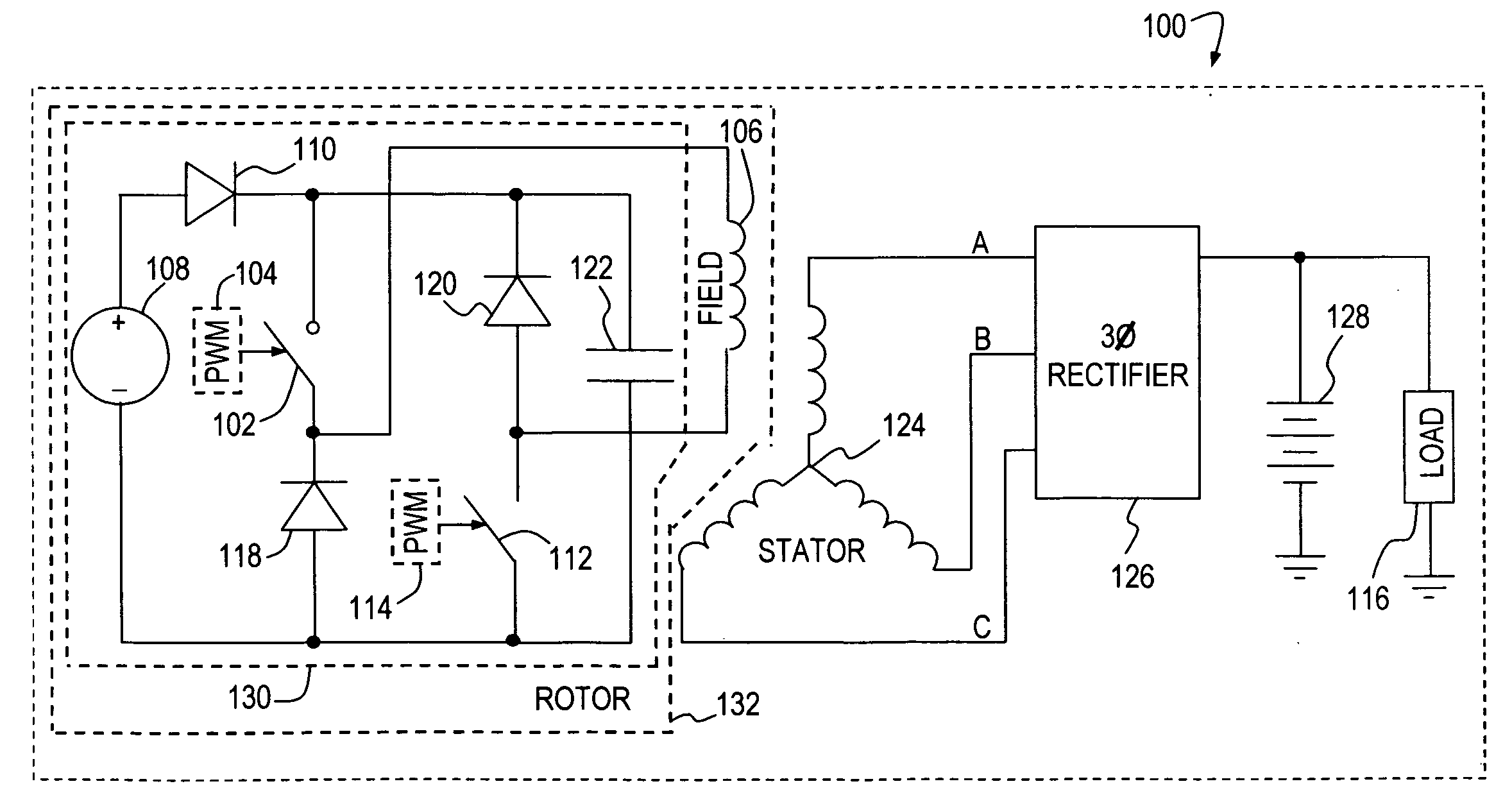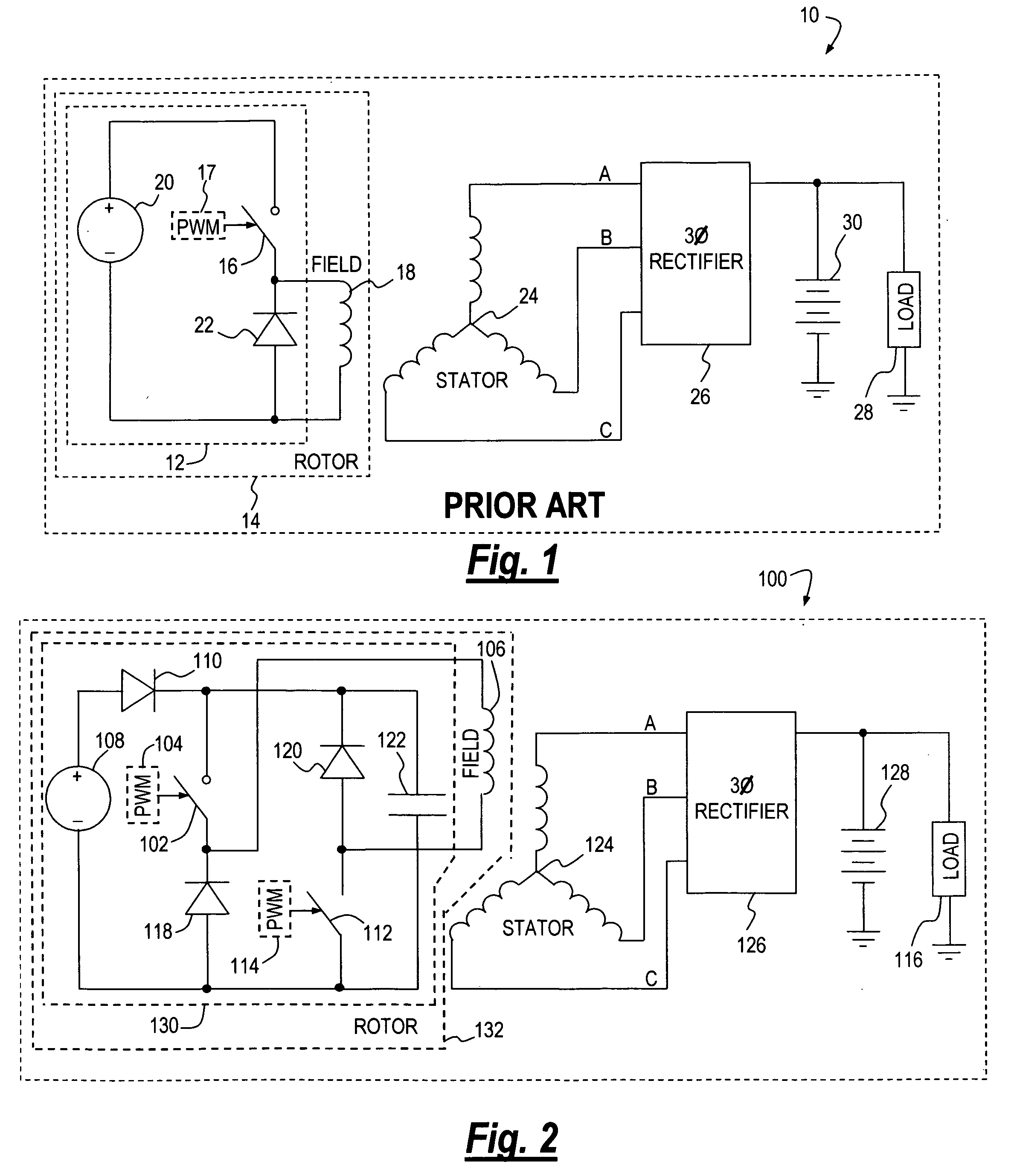Field excitation for an alternator
a field excitation and alternator technology, applied in the field of system control of the excitation coil of the alternator, can solve the problems of affecting the voltage regulation of the electrical system of the vehicle, constant alternator output change, and system load
- Summary
- Abstract
- Description
- Claims
- Application Information
AI Technical Summary
Benefits of technology
Problems solved by technology
Method used
Image
Examples
Embodiment Construction
[0017] A typical prior art alternator system 10 is shown in FIG. 1. Alternator system 10 includes a buck-type switching converter field excitation stage 12 and a rotor 14. A conventional electrical switch 16, such as a transistor, field effect transistor or solid state relay is switched open and closed (i.e., OFF and ON respectively) by a pulse-width modulator 17 in a predetermined manner to periodically interrupt electrical current supplied to a field coil 18 by a voltage source 20. A catch diode 22 is placed in parallel with field coil 18 to circulate current in the field coil when switch 16 is open. A three-phase stator 24 is magnetically coupled to field coil 18. Rotation of field coil 18 by a prime mover such as an engine (not shown) causes the field coil to periodically couple to a set of windings A-B-C of stator 24, thus generating a three-phase alternating current in the stator. The three-phase electrical voltage present at windings A-B-C is coupled to a three-phase (“3Ø”) r...
PUM
 Login to View More
Login to View More Abstract
Description
Claims
Application Information
 Login to View More
Login to View More - R&D
- Intellectual Property
- Life Sciences
- Materials
- Tech Scout
- Unparalleled Data Quality
- Higher Quality Content
- 60% Fewer Hallucinations
Browse by: Latest US Patents, China's latest patents, Technical Efficacy Thesaurus, Application Domain, Technology Topic, Popular Technical Reports.
© 2025 PatSnap. All rights reserved.Legal|Privacy policy|Modern Slavery Act Transparency Statement|Sitemap|About US| Contact US: help@patsnap.com



